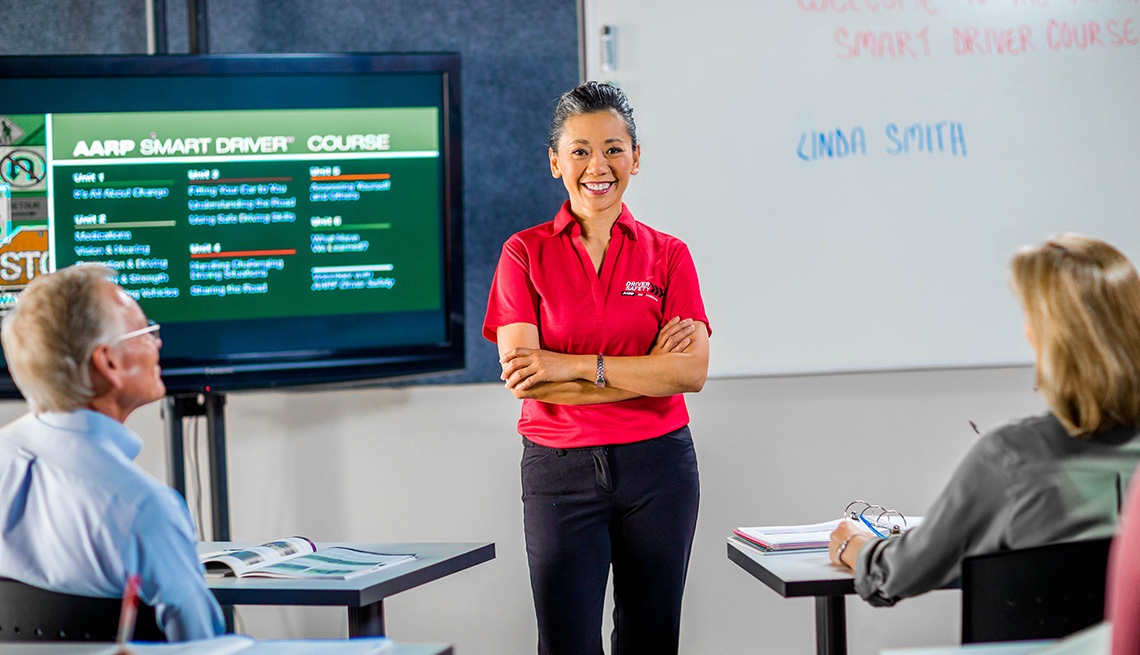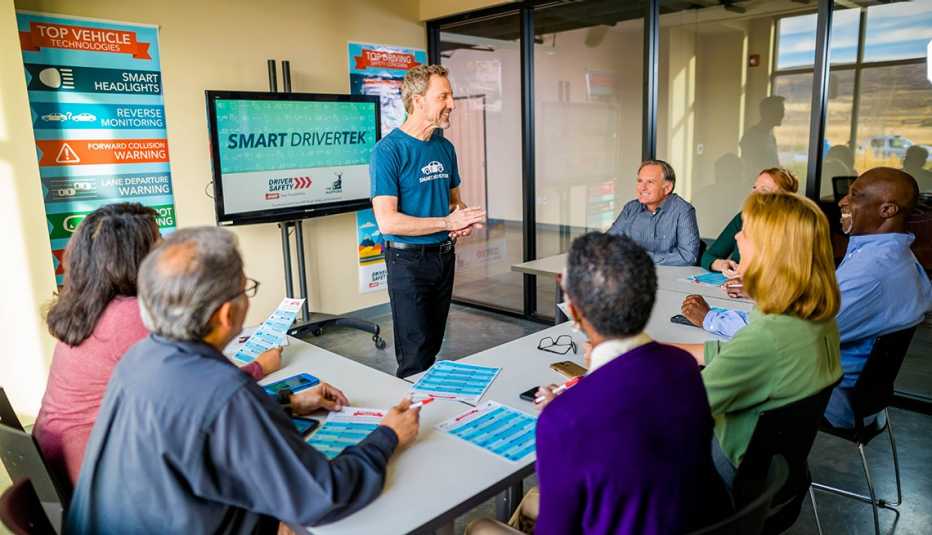AARP Hearing Center
A problem: Many of us haven't had a refresher since we walked out of the Department of Motor Vehicles with our first driver's licenses decades ago.
That's despite the fact that the driving landscape has changed considerably over the years, including increasingly advanced high-tech safety systems in automobiles. A solution: AARP Driver Safety, an always-evolving program, first launched in 1979 as “55 Alive,” to keep older drivers safe and independent by reinforcing their skills and — especially these days — helping them stay up to date with new technology.
Since its inception, more than 16 million participants have completed the program that includes the flagship course, AARP Smart Driver, a driving refresher class that takes place in classrooms across the country and also is available online. (See other courses described below.)
Volunteers are experienced drivers
The secret to the Driver Safety program's success? Thousands of volunteers — most of them older drivers themselves.
"The heart and soul of our program is our 5,000 volunteers, who instruct the approximately 20,000 classroom courses across the country,” says Kyle Rakow, vice president and national director of AARP Driver Safety.
Volunteers’ backgrounds are as diverse as the makes and models of cars today. Betty-Coe de Broekert, 88, of Springfield, Oregon, is a former teacher. Marcus Vinson, 69, of Wesley Chapel, Florida, worked as an engineer at General Motors. John Case, 65, of Peoria, Arizona, is a former military instructor.
They often start as participants who reach out to their instructors about volunteering opportunities. All potential volunteers are asked to fill out a short online application.
You don't need any particular qualifications beyond having the time and enthusiasm to help others and a comfort speaking in front of a group. You'll be trained in the material before you start teaching.
Time commitment varies. Some instructors do the minimum of three classes a year while others might do a course every week. For those who also take on managerial or marketing positions, in addition to their instructor duties, it may be a full-time job — one they take very seriously.

































































